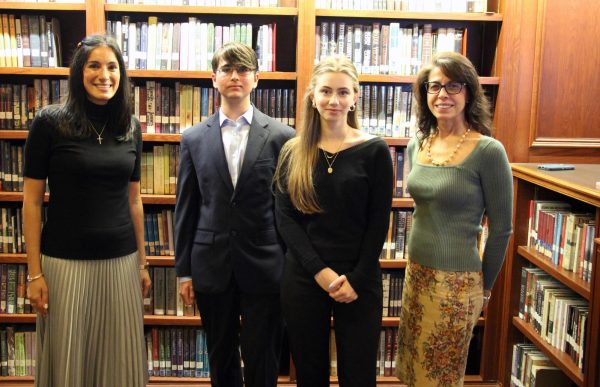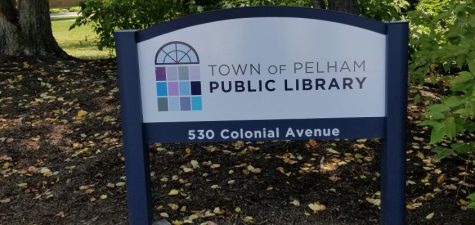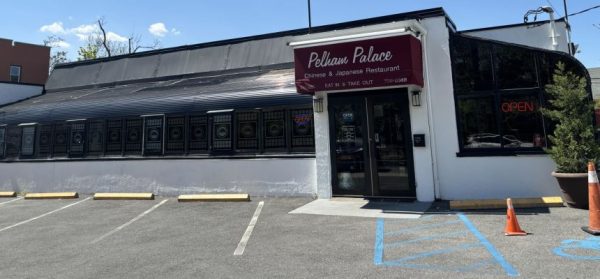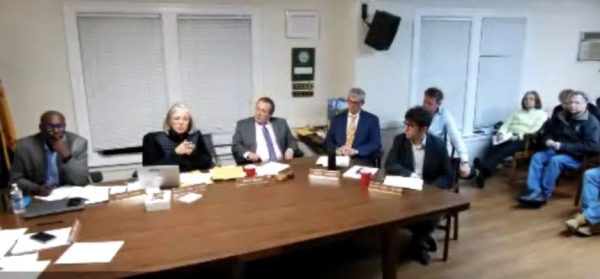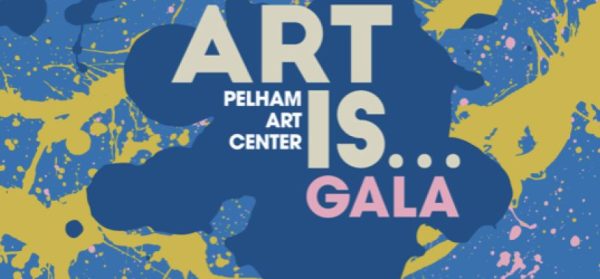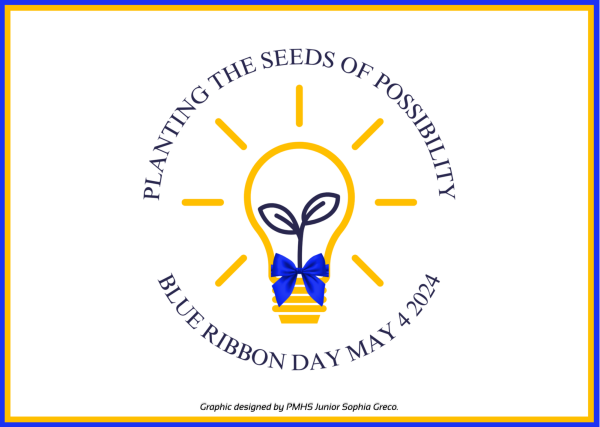PMHS seniors Olivia Pollock, Ann Liu take first and second place in NYS science symposium
Pollock also wins Best in Fair
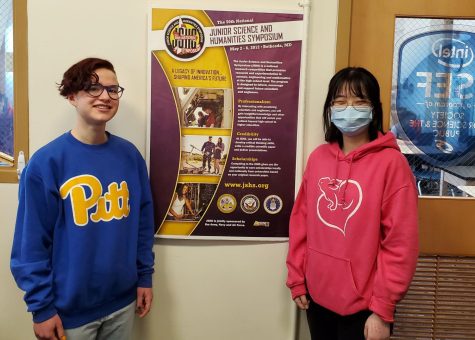 Editor’s note: This press release was provided by the Pelham Union Free School District. The Pelham Examiner publishes press releases in the form received as a service to the community.
Editor’s note: This press release was provided by the Pelham Union Free School District. The Pelham Examiner publishes press releases in the form received as a service to the community.
PMHS Senior Olivia Pollock won Overall 1st Place and Best in Fair and classmate Ann Liu placed 2nd at the New York State Junior Science and Humanities Symposium (JSHS) held last week. In addition to winning a $2,000 scholarship, Olivia will now travel to the 60th National Junior Science and Humanities Symposium in Albuquerque, New Mexico, in April to showcase their work alongside 245 other high school students.
“I was absolutely shocked,” said Olivia, who is looking forward to competing in New Mexico. “I’m really excited to meet other people that are so invested in their research.”
Olivia’s research project, titled “Developing and Assessing Fucose-Based Water-Soluble Bioplastics” has been ongoing since freshman year, when the idea was developed from a “Shark Tank” project. Last spring as a junior, Olivia wrote a grant and presented the proposed research plan to AMPLIFY, a local association of faculty, parents, community members, education-supporting organizations, alumni and students committed to enhancing the Science Research Program at PMHS. In continuing the research, Oliva invented a type of plastic made of natural materials that can break down in the environment as well as in water for which Olivia has been granted a provisional patent.
“I’m so grateful to every person that is a part of this program,” Olivia said, noting teachers Steven Beltecas and Joe DiBello, as well as Dr. Tom Callahan, Director of Science and Math and the members of AMPLIFY. “I wouldn’t be who I am today and would not have gotten as far as I have without them.”
In addition to finishing second at JSHS, Ann, along with fellow PMHS student Andrew Kelly placed among the top 300 scholars at the Regeneron competition earlier this year. Ann’s research focused on “Investigating Strategies For Retinal Regeneration In Mammals Via An Integrated Analysis Of Single-Cell RNA Sequencing Datasets.”
“In my family we have a history of vision impairment, even if it’s just something like nearsightedness,” Ann said. “I’ve always just been worried about the deterioration of the eye, so when I joined Science Research and gained the opportunity to conduct my own research, I knew I wanted to pursue something with retinal research and a treatment for retinal disease.”
“We are so proud of Olivia and Ann for this amazing accomplishment,” Mr. Beltecas said. “Our competition Motto is ‘The Win of One is a Win for All.’ This win really exemplifies the family environment and strive for excellence mentality we have in the research program. Throughout the winter, our students at all levels, work on presentations giving positive and constructive feedback to presenters with the intention of making everyone better. We are so proud of our entire research program for working with and supporting each other every day!”
Both Olivia and Ann said that participation in the science research program has helped them grow as students and they look forward to continuing to pursue science after they graduate from PMHS.
“I look back from time to time on the first presentation that I ever gave,” Olivia said. “I was terrified to present and it didn’t go well. Seeing how I’ve been progressing has been really incredible. This program made me who I am today and set me up for where I’m going to go.”
Ann echoed those points, noting that the program has especially helped with public speaking and presentation skills.
“Science research is definitely like a family,” Ann said. “Some of my closest friends I made because I happened to be sitting next to them in 9th grade. This program made me a better student in terms of presenting – I was terrified of public speaking at first, I couldn’t do it confidently. But after practicing so many times, I’ve gotten so used to it.”
More About the PMHS Science Research Program
The PMHS Science Research program is taught by Steve Beltecas and Joe DiBello. Students work with professional mentors in a variety of fields ranging from environmental and behavioral sciences to cancer research, among others. The students are able to work together and often review each other’s work, providing feedback and honing their presentation and public speaking skills.
More About JSHS
JSHS is a Tri-Service STEM competition sponsored by the U.S. departments of the Army, Navy, and Air Force which promotes original research and experimentation in the sciences, technology, engineering, and mathematics (STEM) at the high school level and publicly recognizes students for outstanding achievement. JSHS regional and national symposia are held during the academic year and reach more than 8,000 high school students and teachers throughout the United States, Puerto Rico, and the Department of Defense Schools of Europe and the Pacific.
Read more about Olivia and Ann’s Research Below:
Olivia Pollock – “Developing and Assessing Fucose-Based Water-Soluble Bioplastics”
Since their invention decades ago, single-use plastics have shaped the way people live. However, in recent years, light has been shed on the dangers they pose to marine ecosystems due to released toxins. Despite the environmental hazards surrounding single-use plastic waste, there is little research regarding the development of water-soluble bioplastics from renewable sources to mitigate these effects. The purpose of this study was to develop water-soluble bioplastics from algae and other natural materials. This work expands upon previous methods of developing bioplastics, but the composition of the polymer itself is novel. It was hypothesized there would be a difference in the dissolution and pH alteration of the fucose-based products in comparison to previously developed PVA-based plastics. Four trials were performed, each with varying amounts of fucose by mass. Additionally, these trials were directly compared to previously studied polyvinyl alcohol-based plastics with different compositions of PVA by mass. Each product was tested in both freshwater and 3.5% saline media; pH level was recorded after each 24-hour interval. I found that the 90% fucose-based plastic dissolved the most with 63.24% dissolution; this was less than the 72.55% of the 90% PVA plastic’s dissolved mass. Chi-Square tests comparing the fucose and PVA plastics, showed no significant difference in the dissolutions. The PVA plastics did not significantly alter their freshwater environments’ while the fucose-based plastics significantly altered pH after both 24 and 48 hours of testing, as supported by P values of 0.0002 and 0.001, respectively.
Ann Liu – “Investigating Strategies For Retinal Regeneration In Mammals Via An Integrated Analysis Of Single-Cell RNA Sequencing Datasets”
Neurodegenerative retinal diseases cause irreversible cell loss, leading to blindness since mammalian retinas cannot regenerate. In contrast, zebrafish retinas regenerate after damage with Muller glial cells (MGs) through cellular reprogramming, proliferation, and neurogenesis. Recent studies stimulated mouse MG reprogramming using regeneration-associated players, e.g., neurogenic transcription factor Ascl1, NMDA, Hdac-inhibitor TSA, STAT inhibitor (ANTSi-treatment), or YAP5SA (YAP5SA-treatment), resulting in various degrees of cell proliferation and neurogenesis; single-cell RNA sequencing datasets of reprogramming MGs were generated and analyzed in each study. Nevertheless, a side-by-side comparison of these reprogramming mouse MGs has not been reported, a critical knowledge gap in therapeutic development. Here, I independently performed an integrated analysis of four single-cell RNA sequencing raw datasets. I assessed cell proliferation and differentiation in the integrated dataset and identified differentially expressed genes (DEGs) in YAP5SA+ MGs, ANTSi MGs, and ANTSi neurons compared to control NMDA MGs. My study generated novel findings: a)YAP5SA+ MGs and ANTSi MGs reprogrammed from control NMDA MGs distinctly; b) ANTSi treatment is more effective for retinal regeneration; c) novel DEGs in these reprogramming MGs were identified; d) NFI genes and Ezh2 were still expressed in ANTSi MGs and YAP5SA+ MGs, likely affecting proper neurogenesis. My study also confirmed previous reports: a) YAP5SA+ MGs proliferated but did not generate neurons; b) ANTSi MGs proliferated and generated neurons but did not go through proper progenitor stages. Taken together, my findings provide further insight into the mechanisms underlying MG reprogramming in mice, moving us a step closer to retinal regeneration in mammals.




